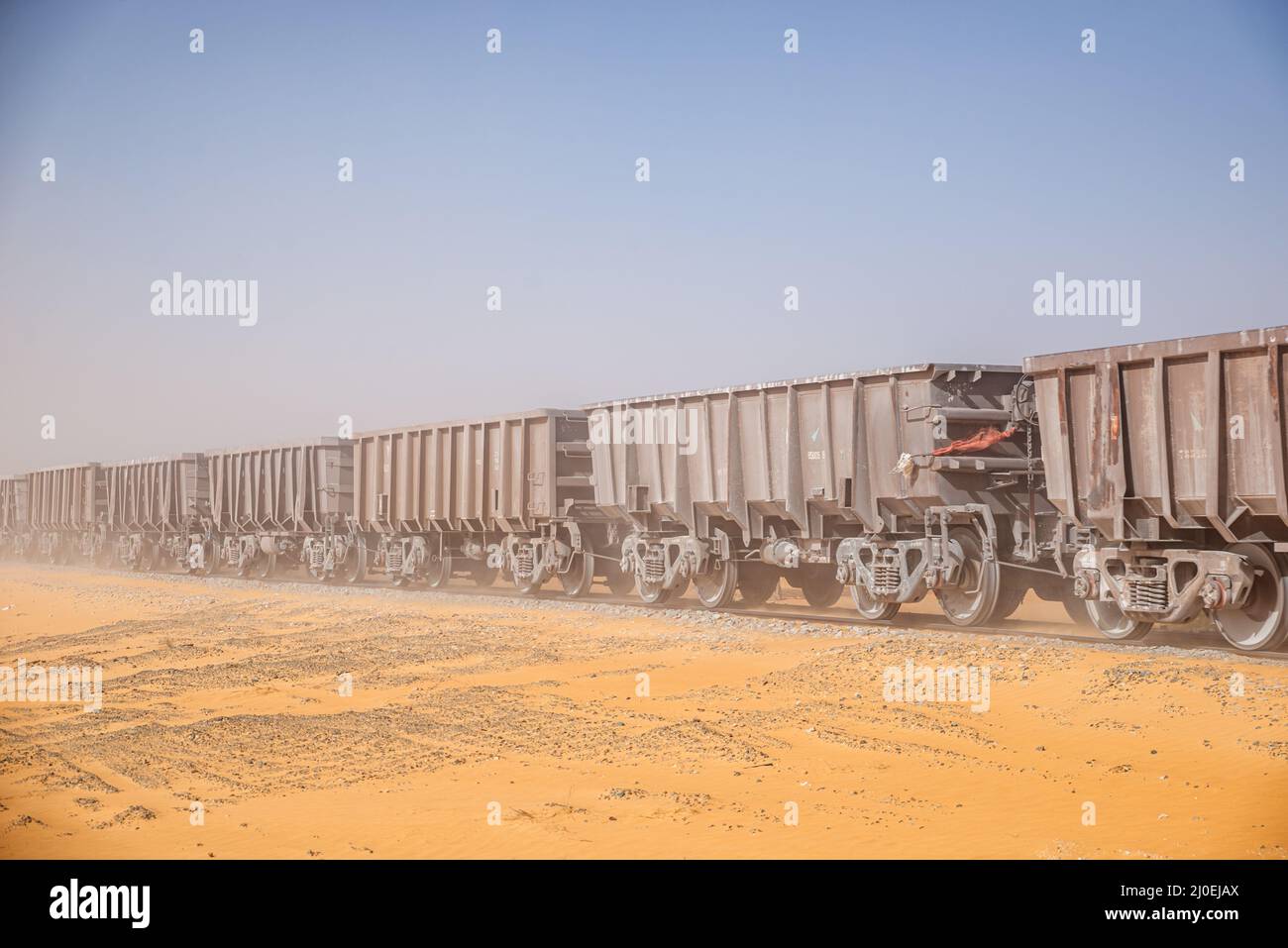Freight cars of the longest train in the world crossing the desert in Adrar Region, Mauritania

Image details
Contributor:
Roberto Cornacchia / Alamy Stock PhotoImage ID:
2J0EJAXFile size:
69.1 MB (2.4 MB Compressed download)Releases:
Model - no | Property - noDo I need a release?Dimensions:
6016 x 4016 px | 50.9 x 34 cm | 20.1 x 13.4 inches | 300dpiDate taken:
28 December 2019Location:
Adrar Region, MauritaniaMore information:
The Mauritania Railway is the national railway of Mauritania. Construction of the line began in 1960, with it opening in 1963. It consists of a single, 704-kilometre railway line linking the iron mining centre of Zouerate with the port of Nouadhibou, via Fderik and Choum. The state agency Société Nationale Industrielle et Minière (SNIM) controls the railway line. Since the closure of the Choum Tunnel, a 5 km section of the railway cuts through the Polisario Front-controlled part of the Western Sahara. The line was a success and provided a major portion of Mauritania's GDP; as a result the line was nationalised in 1974. Following Mauritania's annexation of southern Western Sahara in 1976, the line came under constant attack by Polisario militia, effectively putting the line out of use and thereby crippling Mauritania's economy. This played a major role in prompting the army to overthrow Mauritanian president Moktar Ould Daddah in 1978, followed by a withdrawal from Western Sahara the following year. With the line now secure, repairs were conducted and trains starting using it once again in the early 1980s. This railway is unusual for its usage of the Soviet type coupler SA-3, which is quite rare in non ex-Soviet countries. Trains on the railway are up to 3 kilometres in length, making them among the longest and heaviest in the world. They consist of 3 or 4 diesel-electric EMD locomotives, 200 to 210 cars each carrying up to 84 tons of iron ore, and 2-3 service cars. The total traffic averages 16.6 million tons per year. Passengers are also occasionally transported by train; these services are managed by an SNIM subsidiary, the société ATTM. Passenger cars are sometimes attached to freight trains, but more often passengers simply ride atop the ore hopper cars freely.